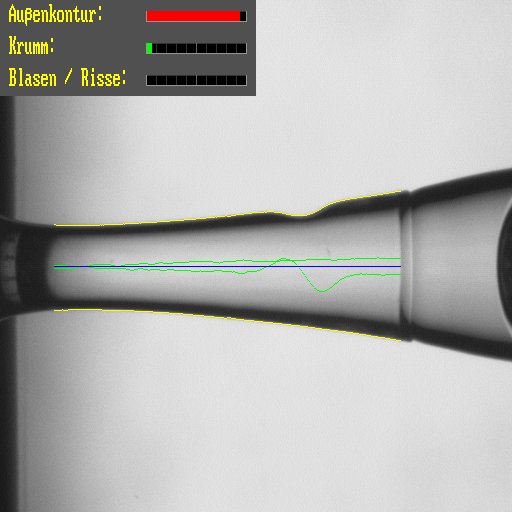| Control units in glass construction:
The illustration shows the central unit of an analyzer consisting of user PC 19" and additional image analysis and control computers. In addition to the actual image analysis, the system also control CNC axes for automatic adjustment of cameras in case of product shifts. The system is built into a water-cooled, dust-free 19" cupboard. |

|






